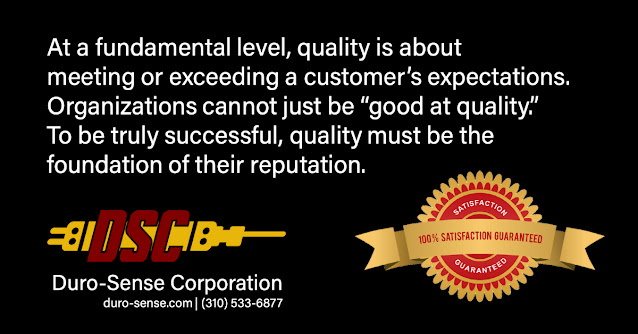Thermocouples are widely used to measure temperature because they are durable, affordable, and have a wide temperature range. A thermocouple is formed by the joining of two different metal alloys at a common point referred to as the measuring or hot junction. Thermocouple lead wires attach to a temperature measuring instrument at a second connection point called the reference or cold junction. When the hot junction is heated, the thermocouple generate a very modest DC voltage. The tiny voltage signal is detected by the temperature measuring instrument and converted to a temperature reading.
Thermocouples produce voltages in the millivolt range, with microvolt changes per degree C temperature change. The signal (voltage) of a standard thermocouple is low, on the order of 10 mV, and the signal-to-noise ratio can rapidly drop in the presence of the types of electrical noise seen in most industrial situations. A small amount of noise can have a significant impact on precise measurement.
There are numerous sources of noise that can interfere with thermocouple measurements. The three most typical sources of noise are as follows:
Common Mode Noise from Ground Loops
Common mode noise generates an undesirable voltage on both leads of the thermocouple. Common mode noise is typically induced by a ground loop, which occurs when a system has a potential difference between two grounds. Because the tip of a thermocouple is a bare wire junction, a ground loop might form. If the tip is grounded where it is detecting temperature and that ground is at a different potential than the ground at the thermocouple's measuring end, a ground loop forms and current flows.
Normal Mode Noise from Electromagnetic Fields
Normal mode noise generates a current that flows in the opposite direction as the measuring current. This form of noise is often created by massive alternating current current sources, such as power lines, which generate a magnetic field. The magnetic field, in turn, generates a current in the measurement path. Motors, lights, and power lines are examples of high-current devices. Normal mode noise is typically at 50/60 Hz line frequency. The normal mode error current is proportional to the field intensity, the size of the loop, and the loop's orientation to the field.
Electrostatic Noise from Rotating Equipment
Stray capacitance introduces electrostatic noise into the measuring path. Electrostatic noise is created by rotating equipment, which generates an alternating current (AC) current that is capacitively connected into the measurement route. Electrostatic noise can be coupled by stray capacitance through the tip of a thermocouple.
The following procedures will significantly reduce thermocouple susceptibility to electrical noise in an industrial setting.
- Twist and foil shield the extension or lead wires from the thermocouple to the measurement instrument. Twisting wires together minimizes both outgoing and incoming noise caused by electromagnetic interference. Each wire in the circuit carries voltages that are both equal and diametrically opposed. The voltages on the two lines are the same, but the polarity is reversed. The polarity of the magnetic field formed around the wire is determined by the polarity of the electric voltage going through the wire. Not only is the polarity of the electric voltage on each wire opposite, but so is the polarity of the magnetic fields radiating from each wire. When equal but opposing forces collide, they cancel each other out.
- Ground the measurement junction at the point of measurement. The grounding is typically to the inside of the stainless steel sheath that covers the actual thermocouple. The advantage of grounding the measurement junction is that the electrical noise is distributed equally on each wire of the thermocouple.
- Use a transmitter with excellent common mode voltage rejection and position it as close to the thermocouple as possible.






